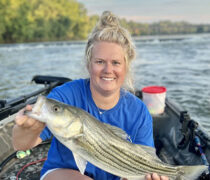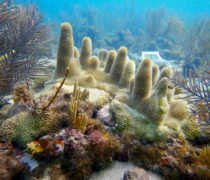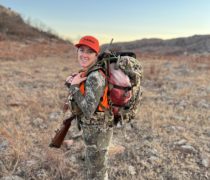Hunting on LWCF Land – A story of access and conservation
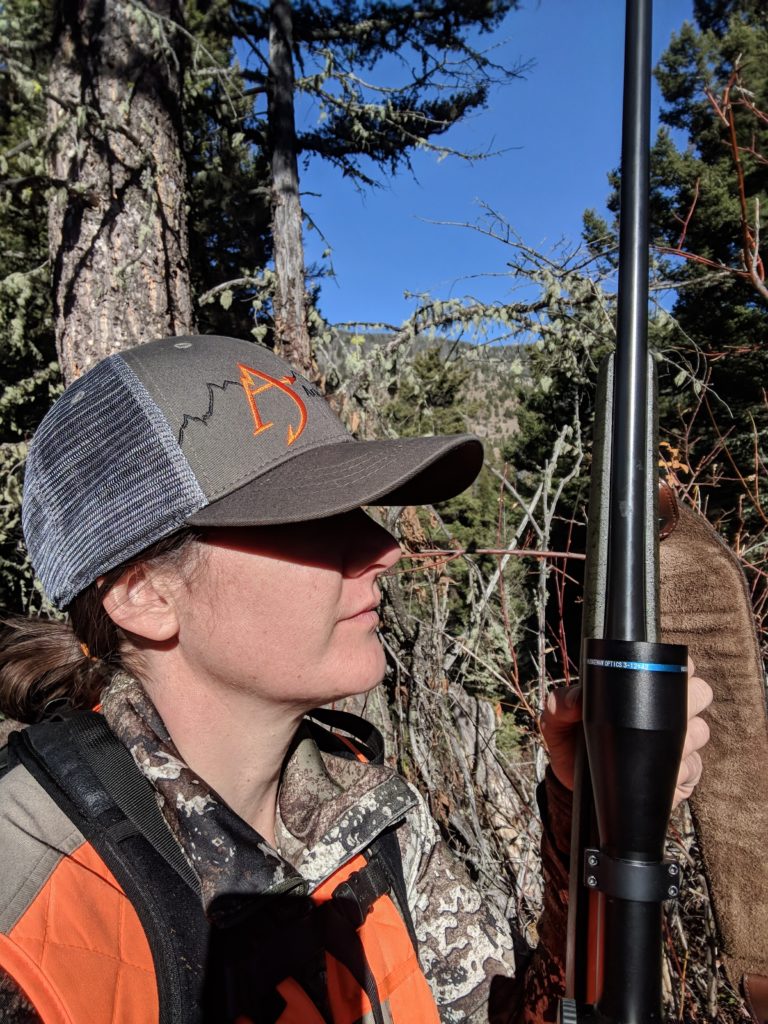
This is my fifth fall in the woods as a hunter, and I am still negotiating my way through this new territory. From the beginning, I’ve spent a lot of time sitting with maps and a lot of time walking around in the woods exploring the boundaries of the lands I am hunting on. I can hunt here, but I can’t hunt past that fence. I could hunt that animal, but I need to make sure he came from the east so he’s less likely to jump onto private property. If I hunt this area, it needs to be opening weekend, before the animals seek refuge in the adjacent field. I am constantly aware of where I stand and of where the animal stands; an awareness central to the ethos of a public land hunter.
Every time I set foot in the woods I feel blessed and grateful that my country values public access and preservation of natural places. Sometimes I am frustrated by big stretches of public land with no access point. As a public land hunter, sometimes, I channel my father and say in a stressed tone, “They are all on private land!” Sometimes, I wonder if I’m this frustrated by the broken up landscape, how do the animals feel about it? Sometimes, I wonder what the solutions are.
I did a lot of research this fall on areas in Montana that benefited from the Land and Water Conservation Fund. I wanted to hunt that land, to see how it felt, to see what thoughts it brought to the surface. I settled on Tenderfoot Creek in the Lewis and Clark National Forest. The Tenderfoot Creek project placed over 8200 acres of private ranch land into public ownership. The total cost of the project was $10.7 million. The Land and Water Conservation Fund covered $10.1 million.
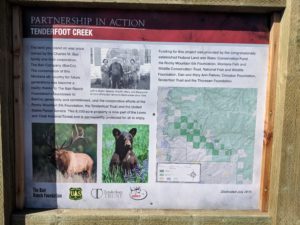
This project took thousands and thousands of acres of beautiful wilderness, prime elk habitat, and pristine Smith River tributaries, and opened it up to public land hunters, anglers, and outdoor enthusiasts. As a public land hunter, angler and outdoor enthusiast, I love this! The conversation around how LWCF can and does increase access to public lands is widespread and extremely important. As a conservationist, it’s also really important to me that we talk about the value of a connected public landscape for the wildlife that live in it.
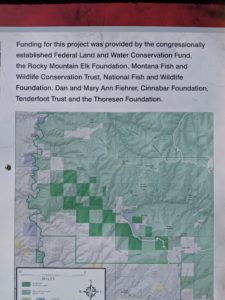 The drawbacks of a checkerboard landscape to the animals I hunt isn’t always obvious. Mostly, they seem to find refuge there. However, imagine this: as an animal, if you were to walk in a straight line through these checkered woods you would cross a boundary roughly every 20 minutes. Sometimes it would mean crossing from a dark forested parcel into an open harvested parcel. Sometimes it would mean injuring yourself jumping the fence that separates your water source from your bedding grounds. It means a lack of cohesive, big picture land management. It means a lack of public oversight to ensure that the management of these lands reflects our values.
The drawbacks of a checkerboard landscape to the animals I hunt isn’t always obvious. Mostly, they seem to find refuge there. However, imagine this: as an animal, if you were to walk in a straight line through these checkered woods you would cross a boundary roughly every 20 minutes. Sometimes it would mean crossing from a dark forested parcel into an open harvested parcel. Sometimes it would mean injuring yourself jumping the fence that separates your water source from your bedding grounds. It means a lack of cohesive, big picture land management. It means a lack of public oversight to ensure that the management of these lands reflects our values.
The Tenderfoot Creek project contributed 13 square miles to create an open and connected habitat for deer and elk. It protected 10 miles of Tenderfoot Creek, a tributary to the Smith River and a vital source of clean, cold water, and spawning habitat.
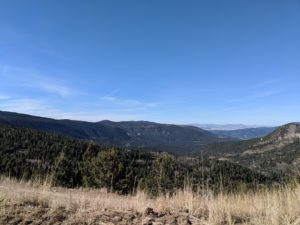
I spent 3 days wandering in the Tenderfoot Creek woods. I was struck by its beauty, which is grounded in rolling hills, trickling creeks, and aspen groves. I came face to face with a whitetail doe who stared at me for over a minute – bobbing her head, snorting, and stomping her hoof while she tried to figure out what I was. I celebrated with the hunters down the road who harvested a beautiful bull elk.
 I found myself incredibly grateful that the family who initiated this project valued public access and wildlife as much as I do. One of the great benefits of LWCF is the opportunity it offers to private landowners who want to conserve their lands in perpetuity and open them up for others to enjoy. I was grateful that our past government valued wildness, wilderness, and opportunity enough to pass the Land and Water Conservation Fund. I was grateful to live in a country where I could spend 3 days in the woods pursuing a lifestyle that I love and believe in.
I found myself incredibly grateful that the family who initiated this project valued public access and wildlife as much as I do. One of the great benefits of LWCF is the opportunity it offers to private landowners who want to conserve their lands in perpetuity and open them up for others to enjoy. I was grateful that our past government valued wildness, wilderness, and opportunity enough to pass the Land and Water Conservation Fund. I was grateful to live in a country where I could spend 3 days in the woods pursuing a lifestyle that I love and believe in.
The election is over now, and our country faces some big questions. The future of the Land and Water Conservation Fund is one of them. LWCF is lucky to have an abundance of bipartisan support from legislators across the country. There seems to be energy and traction for permanent re-authorization. The biggest questions remaining are around the funding for LWCF. Will it get all of the $900 million? What percentage of that will be for the states, for federal land acquisition, for other uses? Will it be dedicated funding?
My hope, as we dig in and hammer out answers to these questions, is that we do so with the same long-term, values-laden, big picture perspective that our country had when it passed this act in the first place. My hope is that the end result will respect our collective commitment to preserving, developing, and assuring accessibility for everyone and honor our conservation values and commitment to wildlife.
We hope you will join Artemis as we redouble our efforts to retain and strengthen this priceless American conservation program. Here are three easy actions you can take right now:
- Call the US Capitol Switchboard (202) 224-3121, be connected to your Senator or Representative, and ask them to fight for full funding and permanent re-authorization of LWCF.
- Add your support to the LWCF Coalition Sign On Letter – click here
- Join Artemis and stay informed on what’s happening with LWCF – click here
And one more in-depth action:
- Write an OpEd supporting full funding and permanent re-authorization of LWCF and asking your congressional representatives to lead the way. Particularly if you live in these target areas – Colorado, Montana, Washington, Oregon, California, Wisconsin, Utah, Arizona and Idaho. Artemis is happy to support you through this process. Your story and your voice are powerful. We are proud to help you amplify it! Email us: artemis@nwf.org. If you get an OpEd printed, be sure to post it and tag it #ArtemisSportswomen #SaveLWCF.




